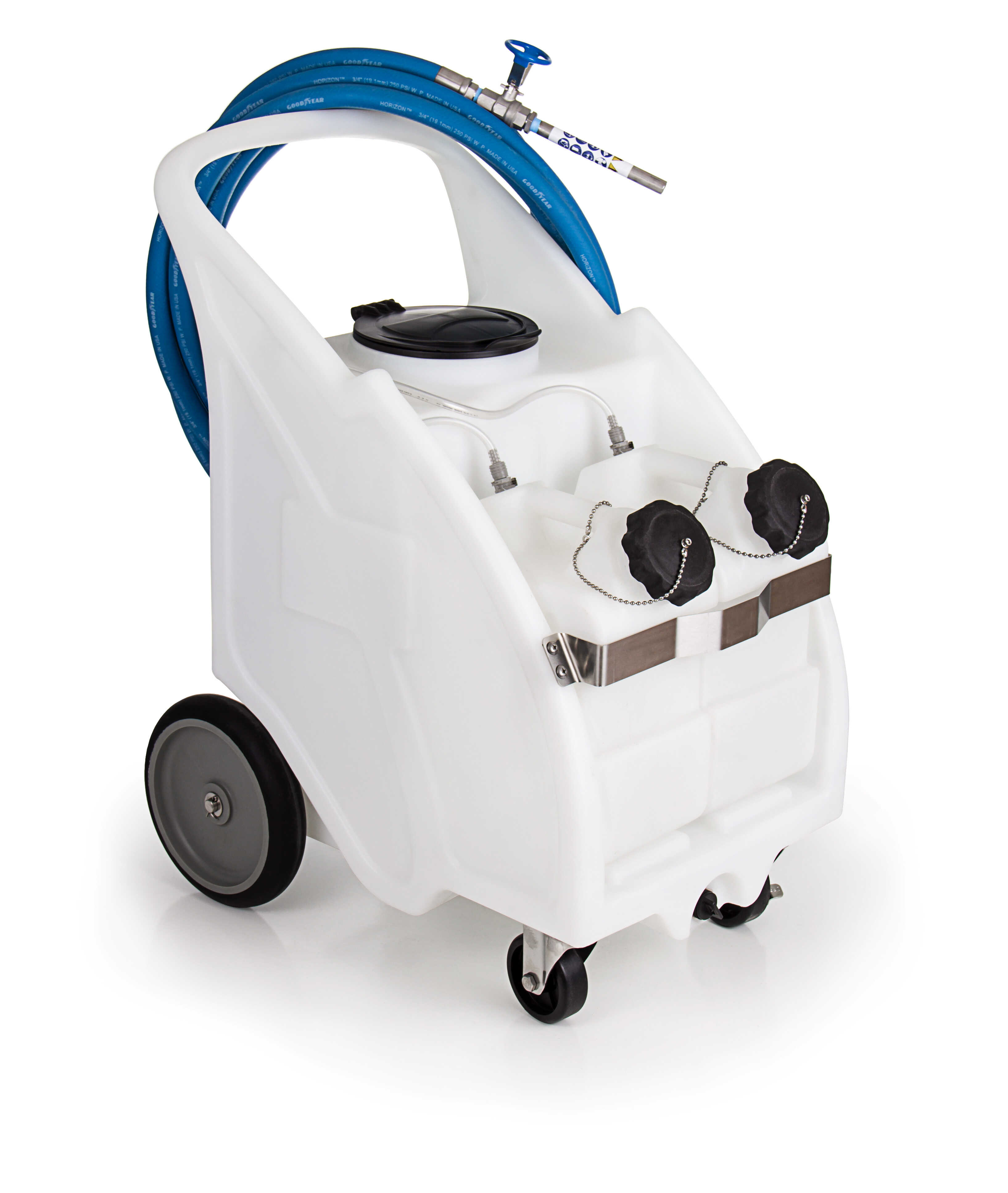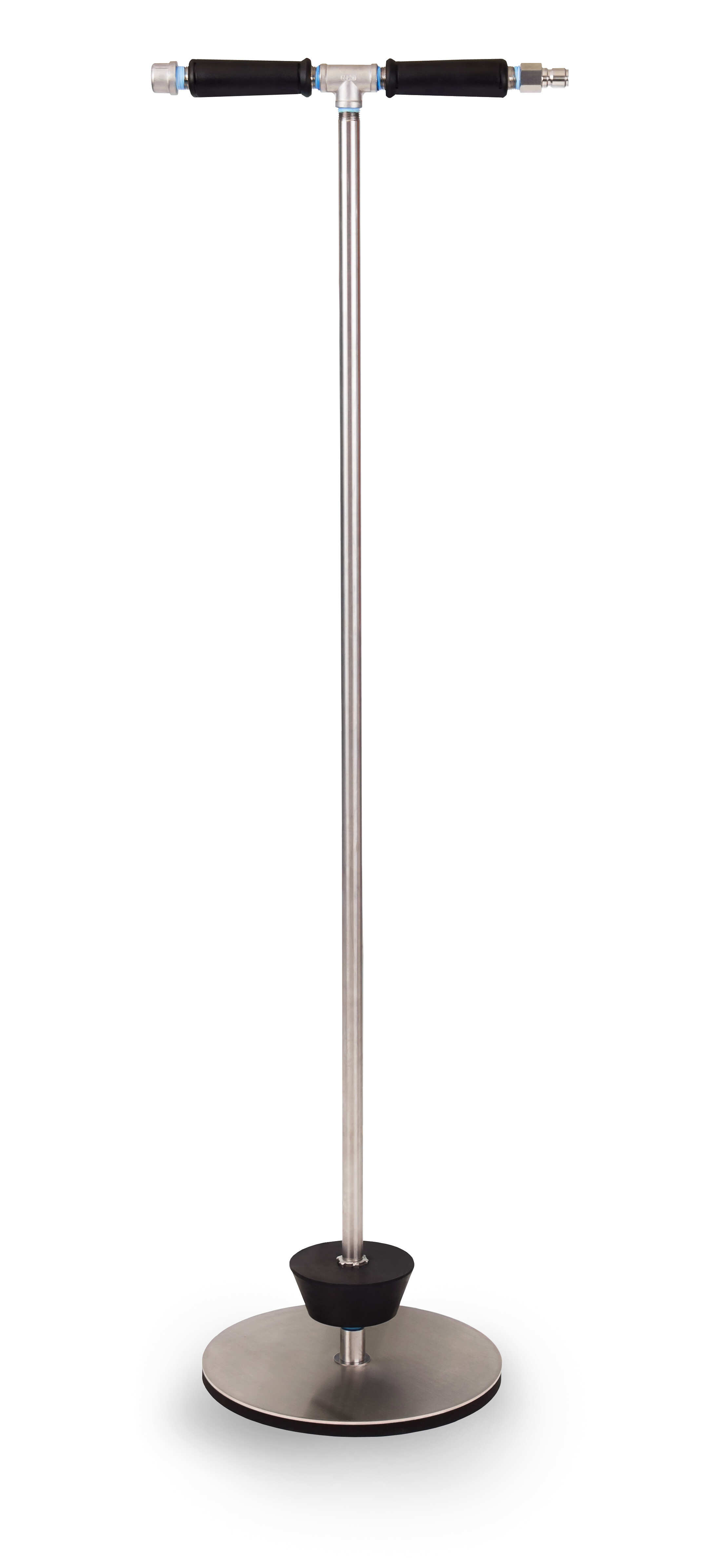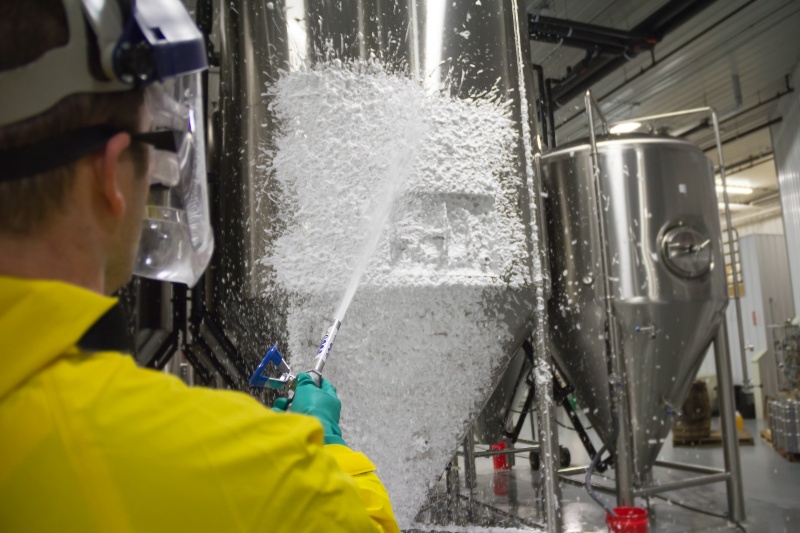Background
In the beginning of the 21st Century, a new approach to applying a green oxidant biocide, peroxyacetic acid (also known as peracetic acid or PAA), was developed by FMC Corp. and called HRS (High Retention Sanitizer). It was a foam additive to aqueous peracetic acid and was developed for a variety of reasons.
Due to the pungent odor of both the actual peracetic acid and a component, acetic acid, spray applications of peracetic acid sanitizers were not desirable. This was the primary reason peracetic acid was relegated to enclosed CIP circuits.
To expand the applications and potential microbiocidal profile of liquid peracetic acid, the foam additive was then developed by Envirotech, whose version is known as Perafoam.
The same application principles used for chlorinated alkaline, alkaline, and acid cleaners also apply for sanitizers. By creating a foam product either for a cleaner, or in this case a sanitizer / biocide, one can delineate where a product has been applied while providing cling / retention time onto a vertical surface or even a ceiling. The foaming additives enable one to economically utilize a chemistry, be it a cleaner or in our case, a peracetic acid sanitizer.
In addition, one could modulate the foam quality, either for equipment or environmental sanitation applications, making either a looser foam for environmental sanitation for drains, or a thicker foam for verticals or ceilings, as well as problematic equipment with a high degree of surface area.
Efficacy vs Dried Film Microbes
Peracetic acid suppliers and sanitation companies had to ascertain how the foam additives enhanced or markedly improved microbiocidal performances versus both dried films of pathogens and molds as well as viable biofilms. Frankly, when microbiocidal efficacy studies were initially performed using foaming peracetic acid versus a liquid version and versus other liquid biocides, I had no preconceived notions of how the foam additive would benefit microbiocidal efficacy.
Sanitizer Efficacy Test vs Dried Film Microbes
Using the Neogen ISO-GRID membrane filtration, we exposed roughly 6 Log10 (1-10 million) CFU (colony forming units) of dried microbe to a prescribed concentration with the foaming additive. After a 30 or 60 second contact time, the foamed peracetic acid was flushed off the membrane surface with a neutralizing broth, then plated onto appropriate media for incubation. Surviving CFU were counted to find the actual Log10 kill or reductions via triplicates.
A total of 2 gram negative and 2 gram positive dried films of bacteria were tested versus both liquid peracetic acid and foamed peracetic acid.
With all 4 dried bacterial species, we found an improvement in biocidal efficacy when the foamed peracetic acid was tested. With Staphylococcus aureus, we had over a 1.3 Log10 reduction (roughly a 95%) improvement. With Pseudomonas aeruginosa, a 2.3 Log10 reduction (roughly over a 99%) improvement, and with Salmonella typhimurium, a 1.3 Log10 reduction (roughly a 95%) improvement.
Comparison of PAA with and without Perafoam vs Fungi
With the yeast Saccharomyces cerevisiae, the foam additive Perafoam improved Log10 reduction by 2.3 Log10 (over 99% kill). Meanwhile with the fungi Penicillium notatum, which contains actual fungal spores, the foam additive Perafoam improved Log10 reduction by 2 Log10 (99% kill).
The data above for these two fungal strains, along with the above bacterial strains, highlights how the foamed peracetic acid version at the same use-concentrations creates greater efficacy due to enhanced retention time and penetration of the microbial surfaces!
Efficacy vs. Biofilm Microbes
RMC has conducted studies on how to reduce and conduct biofilm remediation on both plastic surfaces and drains. Testing the ability of the foamed version of peracetic acid to control biofilms, with and without cleaners, was part of both biofilm remediation studies.
A Biofilm Reactor Model using High Density Polyethylene (HDPE) coupons evaluated both cleaner and sanitizer efficacies and showed results that foaming peracetic acid outperformed liquid peracetic acid and was second only to chlorine dioxide biocide. It also showed that peracetic acid was the top performing combination in removal of a 72-hour old biofilm from HDPE coupons.
We then explored application of the various cleaners and sanitizers by themselves on removal of 72-hour biofilms in a Drain model. Again, we found the foamed peracetic acid performed second only to our chlorinated alkaline cleaner. Therefore, for drain biofilm remediation, we recommend the combination of the chlorinated alkaline cleaner with the foaming PAA sanitizer.
As a result of our Biofilm research studies, we have developed a DrainGuard Cart that employs the chlorinated alkaline cleaner (F-364) in concert with the foaming PAA (EnviroGuard with Perafoam) to optimize and expedite a drain sanitation program in any food or beverage plant. The cart includes all drain cleaning adapters for round, square or trough drains.


Application Considerations:
Utilization of peracetic acid biocide in either sanitizer or disinfectant concentrations, with a foaming additive, greatly expands viable applications in a variety of food processing environments. In addition to the eradication of any embedded dried microbial soils or biofilms in drains, other environmental applications include walls, covings, ceilings, drain pans, loading docks, and cooling doors (sliding and roll up types).
This includes both holding coolers, as well as ambient to climate-controlled processing rooms. Since the concerns here include a variety of pathogenic and spoilage bacteria and fungi, the foaming additive greatly expands penetration into these biosystem matrices tackling a range of microbial issues.
Regarding zones 1 & 2 with problematic equipment, foaming peracetic acid can provide the penetration and contact time into large volume surface areas, and poor hygienic designs that sprayed liquid sanitizers cannot provide.
Case Study Pudding Filler Sanitation
Issue: Liquid sanitizers left high levels of bacteria even after cleaning.
Solution: Application of foaming peracetic acid with a 30-minute contact post clean. The ability of foaming peracetic acid in reaching equipment recesses, delivering the biocide to the microbial niches, and providing much-needed contact time resulted in dramatic reductions in microbial numbers.
The application of a foamed peracetic acid biocide, both as a sanitizer and disinfectant, provides a sanitation program with a versatile tool in their microbial control arsenal both for control of environmental and equipment niches vs spoilage and pathogenic microbes.
Contact RMC for more information!

